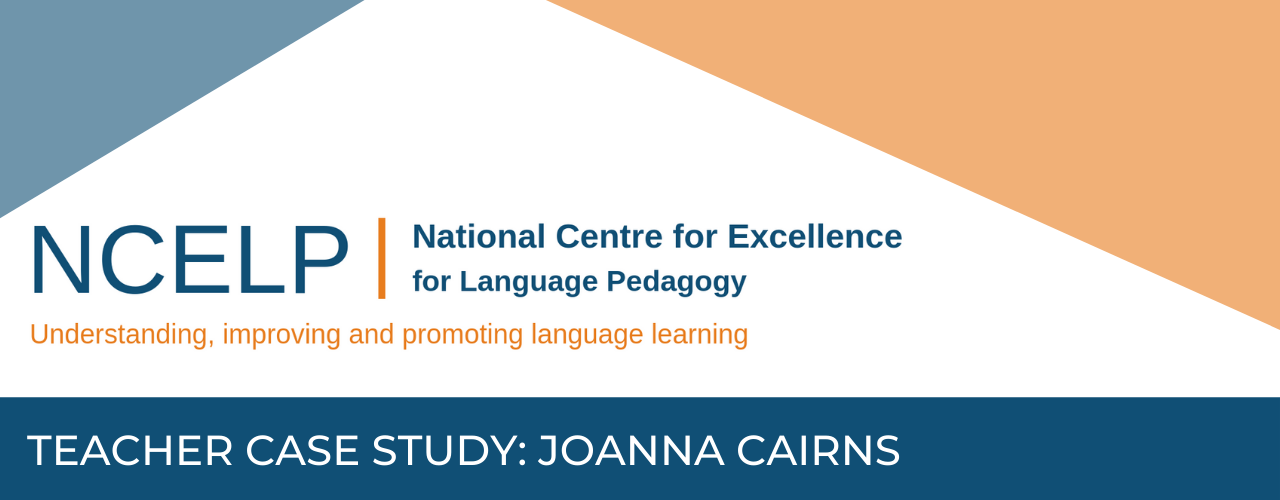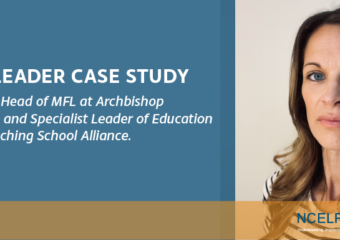We interviewed Joanna Cairns, NCELP Course Leader, and Head of MFL at Archbishop Temple Church of England High School in Preston, Lancashire.
How long have you been working with the NCELP SoW?
We were one of 9 Lead Hub schools, so we have worked with NCELP since the beginning and supporting 5 local schools in developing our pedagogy and practice.
Which features of the NCELP SoW do you particularly enjoy/appreciate with the NCELP SoW?
It is hard to choose which of the features of the NCELP SOW we are enjoying most. The team are thoroughly enjoying having a planned approach to phonics teaching with a clear route map of SSCs for French and Spanish learners. We also like the recycling and retrieval approach to vocabulary. All of our learners have iPads and access to our virtual environment Firefly so we have been experimenting with flipping the vocabulary learning and using online games and activities alongside the NCELP learning homeworks to promote the importance of regular practice. We also have enjoyed letting the functionality of grammar steer our curriculum and we are enjoying the new approach to using contrasting pairs and planned retrieval to ensure our pupils are not overloaded in their early experiences of learning a language in the secondary classroom.
We also like the recycling and retrieval approach to vocabulary
What is the impact on your students?
Our Year 7 & 8 pupils are very much engaged in their learning and pupil voice reports they enjoy all elements of the lesson. We have noticed much more engagement in grammar input listening and reading activities in all types of learner due to how carefully scaffolded these are, with pupils starting to loving spotting the patterns of each language. Pupils are more confident reading aloud and much more able to retrieve meanings and vocabulary of a wide range of lexical items, especially verbs.
Pupils are more confident reading aloud and much more able to retrieve meanings and vocabulary of a wide range of lexical items, especially verbs.
Have you had to overcome any challenges and, if so, how have you done this?
Since we aim to give all our pupils opportunity to learn two languages at KS3, our curriculum time does not match that set out by the NCELP SOW, so we have had to carefully plan our progress through the curriculum to match our context. We cover all elements in the sequence NCELP suggests as we believe in the reasoning for this and we know that trying to cut elements out or rush through the curriculum will compromise the efficacy of our ambition. Instead we move at a slower rate through the curriculum, in effect taking 4 terms to cover Y7 rather than 3. Having said this we are still sufficiently confident that the challenge is there for our pupils and also the support for all pupils to make good progress in two languages.
Our curriculum time does not match that set out by the NCELP SOW, so we have had to carefully plan our progress through the curriculum to match our context.
Have you innovated to suit your context?
We have carefully set up pages for each lesson of the SOW on our VLE, Firefly which provide easy access to pupils for each element of the lesson including the main quizlet list and the 2 consolidation quizlet lists identified for learning that week. We have also hyperlinked the Oak National video to each lesson page, the learning resources for the lesson and additional games we have made with the content using a range of educational apps so that pupils can explore the learning in a variety of ways before and after the lesson. During lockdowns this proved invaluable as pupils were able to continue their learning independently with these resources and colleagues have easy access to each lesson resource to promote work life balance. It did take an investment of time to get this set up, but in our second year of Y7 this year we have reaped the rewards and we are investing time this year in doing the same for Y8.
We have also created a range of knowledge organisers, phonics games inspired by dobble and mini assessments to support pupils and also to fit our school context and ARR schedule.




